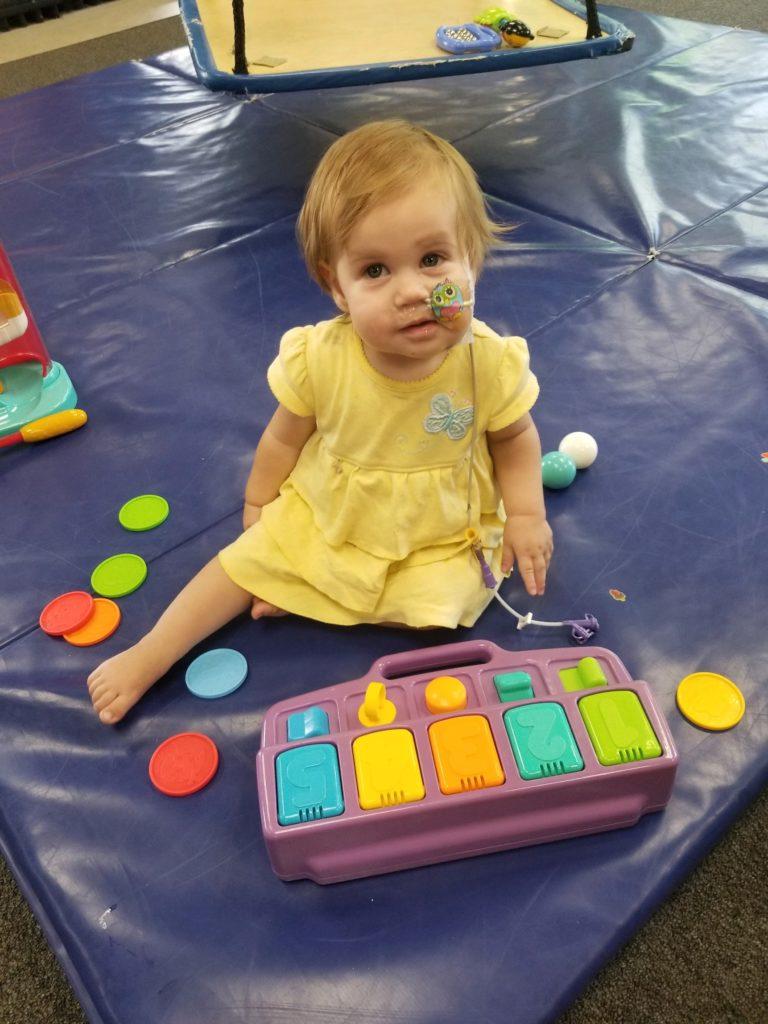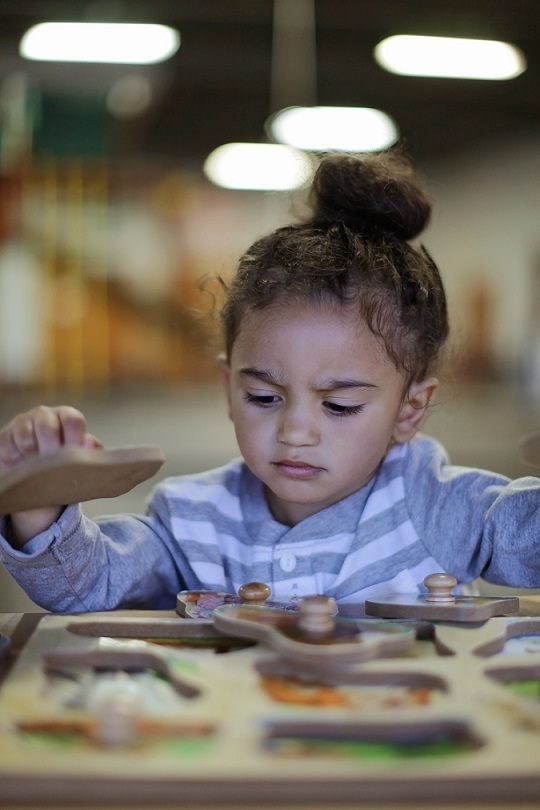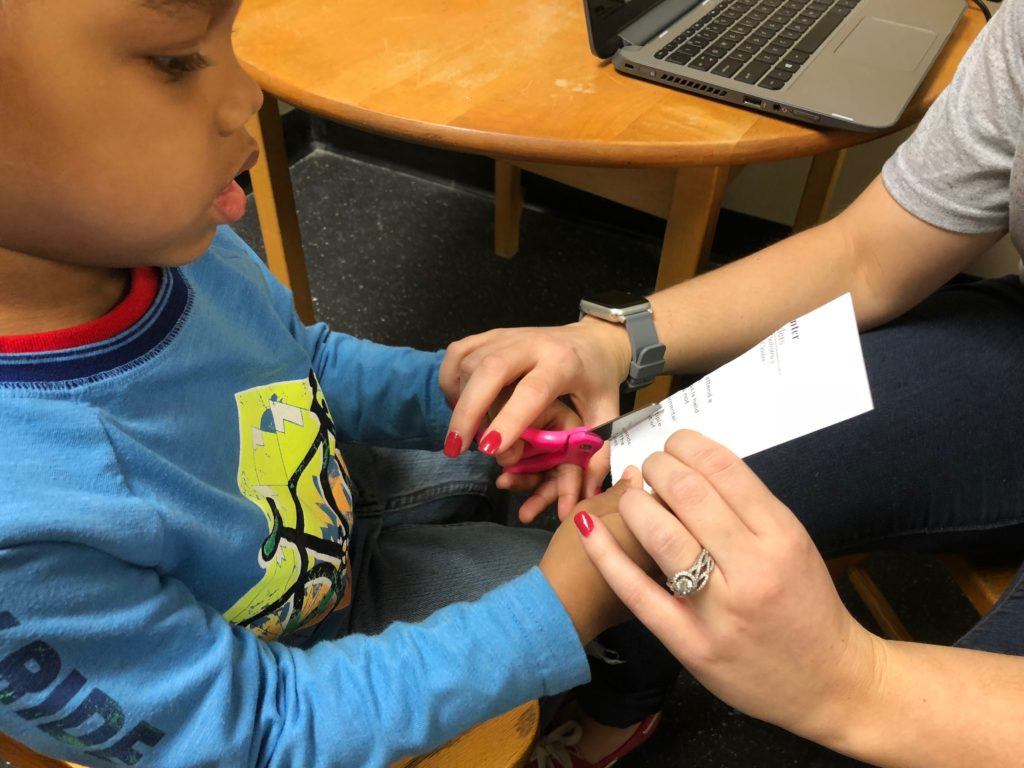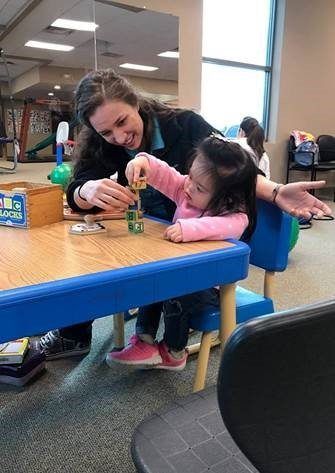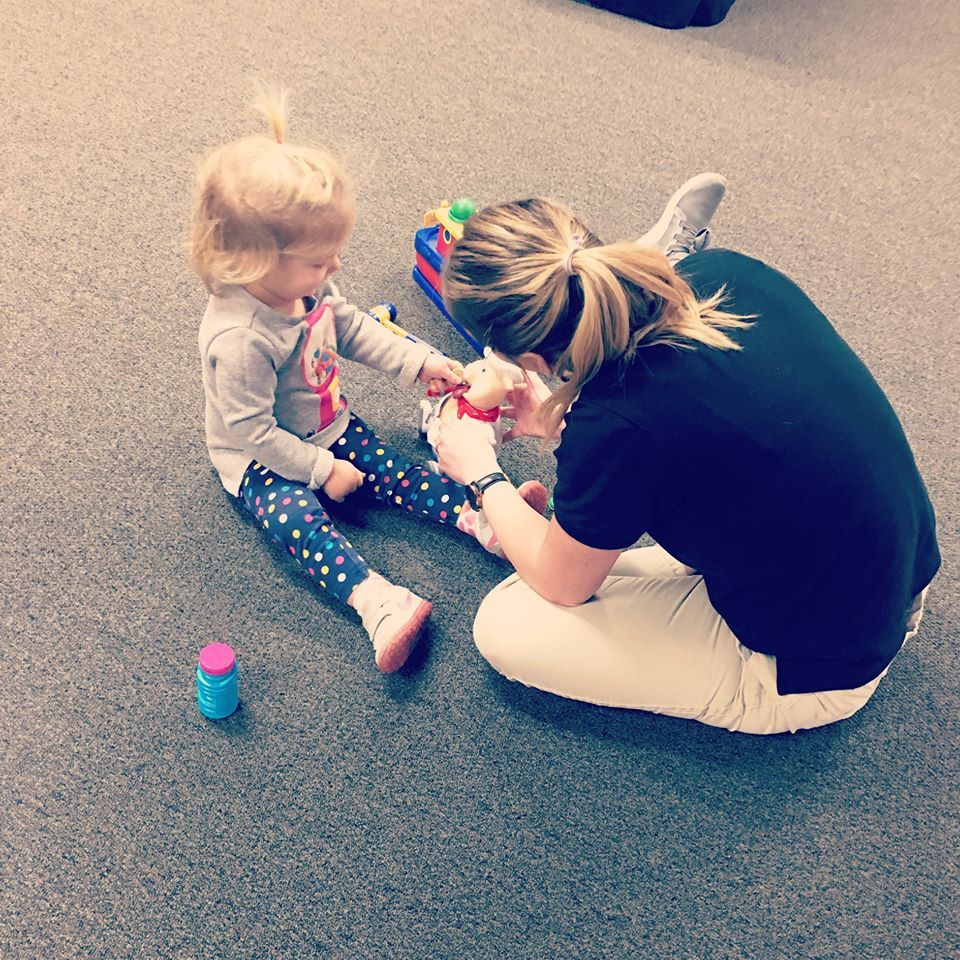Pediatric Occupational Therapy & Development in the Cincinnati & Dayton, OH, Area
Having a child that struggles to develop necessary skills is a worrying and frightening experience. You love your child and want the best for him or her, but you fear they will be left behind.
One area your child may struggle in is his or her “occupation,” or the daily activities he or she is expected to participate in. A child’s occupation usually includes playing, socializing with other children, completing schoolwork, and accomplishing hygiene tasks.
ABC Pediatric Therapy Network strives to help children in the Dayton and Cincinnati, OH area strengthen their developmental skills through the use of occupational therapy. We believe in giving every child a chance to learn and grow and master the skills that may currently seem out of his or her reach.
Understanding Occupational Therapy
The term “occupation” likely brings up the image of an adult workforce, and, in a sense, this therapy addresses a similar aspect. A child’s job, or occupation, is to develop the skills that will help him or her succeed later in life, including motor and social skills.
If your child struggles to develop these skills on his or her own, one of our occupational therapists will help your child through the process. They will evaluate your child’s skill level and determine which areas might need a boost. A few common ways they can help children include:
- Teaching the child how to properly hold a writing instrument or toy
- Suggesting environmental adaptations, such as a reduction in stimulation if a child easily loses
focus
- Teaching the proper way to perform basic hygiene skills, like washing hands or brushing teeth
- Improving coordination skills
By gaining these skills early in life, your child will gain confidence and independence. Your son or daughter will be able to keep up with his or her peers and fully engage in the activities required of him or her.
Developmental Checklist
Is your child meeting their developmental milestones?
Fine Motor Skills
Fine Motor Skills are the small movement skills of our hands, fingers, and wrists that develop throughout our growing years. These include writing, cutting, keyboarding, eating, holding small items, buttoning, and turning pages. Proper development of fine motor skills requires strength, postural control, and coordination. It also requires appropriate function of our eyes.
Fine motor skills are very important to a child’s overall development, health, learning experiences, and self-esteem. Developing independence with fine motor skills at an early age is crucial to school performance and self-care skills (such as dressing). The human body follows a step by step process, where one area often relies on another to achieve full function.
Each milestone that is achieved throughout the first years of life is dependent on the one that came before it. To be able to cut and write, we must first learn to grasp. We need to learn how to hold small objects in order to feed ourselves. We need to use our eyes and hands together before we button and zip. The body goes through a complicated movement process. If a child is not achieving a milestone within a reasonable time frame, it is important to ask questions and seek out guidance right away because the next set of skills is coming up fast. The longer you wait, the further behind the child will fall. The earlier an intervention is provided, the more effective it can be.
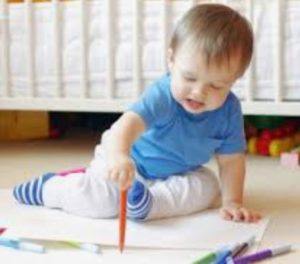
Sensory Integration Skills
Sensory Integration is our ability to take in information from our senses and organize it so we can function in our world. Sensory Integration Skills develop throughout our growing years and involve our ability to touch, taste, smell, feel movement, hear, and have an awareness of our body. Proper development of sensory integration skills requires children to experience senses in the world around them.
Sensory Integration skills are very important to a child’s overall development, health, learning, behavior, and self-esteem. Developing sensory integration skills at an early age impacts a child’s behavior, social skills, and play skills. The human body follows a step by step process, where one area often relies on another to achieve full function. Sensory integration develops with fine and gross motor skills – they are all dependent on one another.
Each milestone that is achieved throughout the first years of life is dependent on the one that came before it. To be able to swing and climb on the playground, we must first learn to tolerate movement through space. We need to learn how to cope with busy, quiet, and changing environments in order to concentrate in school. We need to use our body senses together in order to function in our natural environments.
If your child is showing signs of challenges with their sensory Integration skills, it is important to seek out help right away before behaviors become more severe. The earlier intervention is provided, the more effective it can be. You want you and your child to experience less stress as quickly as possible.
Read More about why it’s important to get help for your child now.
Identifying a Need for Occupational Therapy
While every child learns differently and progresses at a different rate, a child developing at a normal rate tends to hit certain developmental milestones. The checklist below offers a guideline for how to track your child’s progress. If your child has not yet hit the suggested milestones for his or her age, contact our office. We can help identify whether your child might benefit from occupational therapy.
To learn more about occupational therapy in Cincinnati, contact the location closest to you. We look forward to working with you and your family.
Occupational Development – Parent Checklist
If you have any questions about your child’s physical development, browse our parent checklist below and give us a call today.
0-4 months
- Holds head in alignment
- Tracks an object
- Moves arms and legs when laying on back
- Lifts head a little when laying on belly, can prop on elbows
- Brings hands together when laying on back
- Props on elbows in prone with neck extension
- Rolls back to side
- Grasps rattle when placed in hand
- Likes looking at a human face more than other things
- Responds to a smile with a smile
- Looks into caregiver’s face and eyes with interest
- Reaches toward and touches toy
- Hits at dangling objects with hands
5-6 months
- Sitting using hands for support and starting to sit independently
- Grabs both feet and hold when on back
- Brings feet to mouth
- Reaches to a toy when playing on belly
- Props on extended arms when on belly
- Holds and shakes a toy
- Puts fingers in mouth
- Holds hands open, rather than in fists, at least half of the time
- Smiles at self in front of mirror
7-8 months
- Sitting by themselves
- Retrieves a toy in sitting and returns upright
- Rolls
- Crawls with belly on touching floor
- Bangs a toy on the floor
- Passes a small object from one hand to the other
- Plays peek-a-boo
- Bangs toys together
- Feeds self finger foods
9 months
- Starts to crawl on hands and knees
- Pulls to stand at a table
- Waves Bye-bye
- Releases objects intentionally
10 months
- Protecting reaction backward
- Maintains sitting for 60 seconds while playing with a toy
- Transitions to sitting from on belly
- Bounces while holding onto your fingers
- Takes 4 steps with support on your fingers
- Plays in standing at a table
- Stoops at table to retrieve object from floor
11 months
- Cruising on and between furniture
- Pivots in sitting
- Standing for 5 seconds without support
- Walks 4 steps with 1 hand held
- Walks with a push toy
- Pushes or rolls a ball
- Drops small things, such as cheerios into a cup
- Throws things just to see what happens
- Removes socks
12 months
- Transitions to stand using hands and feet (bear stance)
- Walks 8 feet with one hand held
- Walks 5 steps independently
- Corrals a ball in sitting
- Grasps thick crayon or pencil in fist as if to mark, but may not mark
- Turns page of a cardboard book
- Helps to pull off simple clothing and extends arms and legs to help with dressing
- Puts objects into others, (puts blocks into a basket)
- Pulls off shoes
- Starting to drink from a straw
13 months
- Rolls a ball 3 feet forward in sitting
- Flings a small ball while standing
- Enjoys looking at pictures in books
- Imitates adult by scribbling with crayon or pencil
- Pushes car along
- Brings filled spoon/fork to mouth
14 months
- Crawls up a few stairs on hands and knees
- Hands things to others
- Points at desired objects with index finger
- Makes a stack of 2 blocks
- Rolls a ball to you
15 months
- Creeps downstairs independently
- Throws ball overhand
- Marks independently on paper with crayon or pencil
- Drinks from cup without much spilling
- Puts something in and then gets it out of a container
16-18 months
- Turns container over to pour or dump contents
- Turns small knob
- Gets spoon in mouth right-side up with little spilling
- Selects and puts square or rectangular objects into respective receptacles
- Puts large round pegs into pegboard
- Helps dress and undress self
- Throws ball overhand a few feet
- Drinks from cup independently
- Turns light switches on and off
- Looks independently at picture books and turns pages
- Zips and unzips easy zippers
- Plays individually, explores environment to learn, will play beside a peer with little interaction
- Uses play dough, paint, and paper
- Scribbles without going off paper
- Builds a 4-6 block tower
- Throws ball underhand a few feet
- Climbs up jungle gym ladder and negotiates a slide
- Grasps thick crayon with thumb and fingers
- Puts square, round, and triangular shapes into form board
- Imitates drawing a vertical line
- Spontaneously draws strokes, dots, circular shapes
- Stacks 7-8 small blocks
- Hand preference established
- Presents arms and attempts to catch ball
- Identifies 4 body parts on self
- Makes small cuts (snips) on line with child-safe scissors and some help
- Grasps spoon with fingers and rotates wrist to bring spoon to mouth
- Washes hands by self
- Throws ball 7 feet underhand
- Squeezes or pulls play dough apart
- Grasps pencil with thumb and fingers instead of fist
- Screws and unscrews jar lids
- Sorts objects that vary in size only or color only when shown how
- Undresses with help only for fasteners and pullovers with narrow necks
- Matches blue, red, and yellow objects by color
- Eats with a fork (with spillage)
- Catches ball tossed gently from 5 feet
- Completes a simple 3-piece puzzle of something familiar
- Pours accurately from one container to another
- Starting to play in a way that is more symbolic, dramatic, and interactive
- Makes continuous cuts with child-safe scissors
- Copies a horizontal line and a circle
- Builds a 9-block tower
- Spoon/fork to mouth with no spillage
- Dries hands
- Plays by rules and in groups with increase in dramatic and imitative play
- Completes an easy puzzle
- Traces around the edges of basic shape templates
- Cuts a piece of paper in half with scissors on a more or less straight line
- Copies a vertical-horizontal cross
- Puts shoes on completely, on correct feet
- Buttons and unbuttons large – quarter in buttons
- Cuts on a line
- Makes a flat, round cake by pressing and patting dough on table with fingers
- Puts 3 things in order, such as hard to soft, full to empty
- Traces and stays on (most of the time) a 3-inch, pencil-thick, horizontal line
- Begins to copy some vertical/horizontal letters
- Performs a forward roll
- Draws a person with 3 different body parts
- Colors almost entirely within lines of 4-inch wide circle
- Dresses and undresses when requested without much help
- Copies a cross
- Puts socks on correctly
- Pumps self on swing
- Copies and cuts a square
- Cuts easy foods with a knife
- Copies color/shape sequence
- Zips most zippers
- Traces around own hand with a crayon
- Completes simple dot to dot pictures
- Performs a few sit-ups
- Skips
- Performs jumping jacks
- Moves fingers in fine, localized movements when writing with marker
- Reads and writes numerals to 5
- Matches letters in a group of different letters
- Draws a face with mouth, nose, and eyes, and a person with 6 or more parts
- Copies first name, although letters may be large, awkward, or reversed
- Ties shoes (starts at 5, but may not be mastered until 6)
- Prints a few capital letters without copying
- Copies a triangle
- Performs several sit ups well
- Performs several push-ups
- Able to perform the monkey bars
- Names most uppercase letters
- Brushes or combs hair well
- Uses simple tools, such as child’s screwdriver
- Prints all numerals 0-9 and all letters without copying
- Able to rollerblade
- completes a 6- to 12-piece interlocking puzzle
- Plays simple card games, such as Go Fish
- Competitive Play: Participates in team sports and activities that promote competition with structured rules
Through steady improvement, your child can attain a boost of confidence.
Help your child find new levels of independence with pediatric occupational therapy in Cincinnati and Dayton, OH.
 Skip to content
Skip to content
